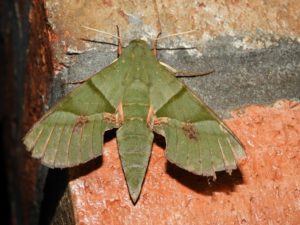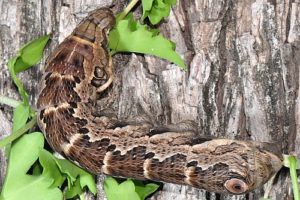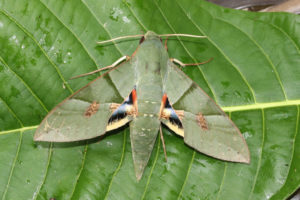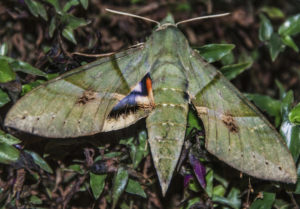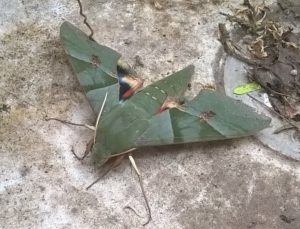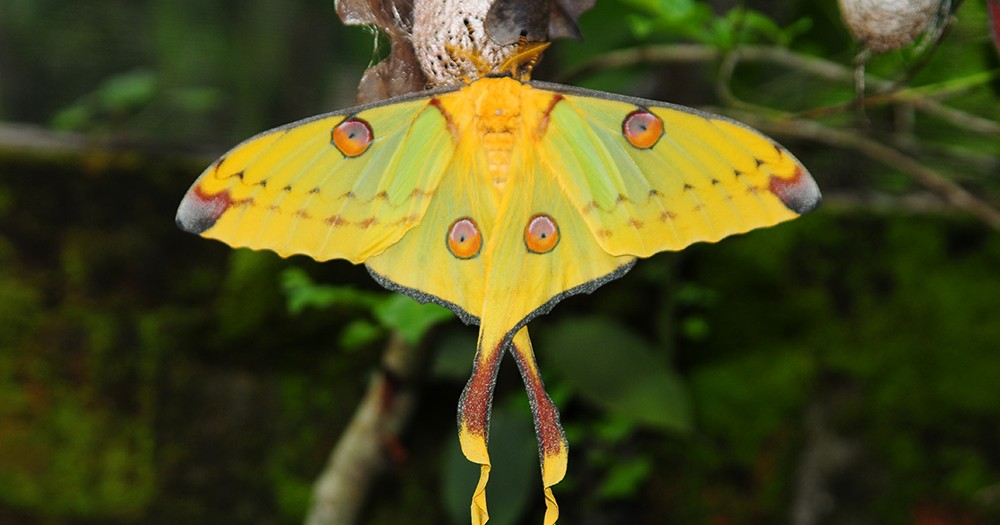Gaudy Sphinx Moth (Eumorpha labruscae)
The gaudy sphinx moth is a member of the family of sphinx moths found in the Americas. Swedish botanist Carl Linnaeus first described this species in the 10th edition of his book Systema Naturae in 1758.
ecoregistros.org
Scientific Classification
- Family: Sphingidae
- Genus: Eumorpha
- Scientific Name: Eumorpha labruscae
Description and Identification
Caterpillar
The larvae of these moths have a very unique set of patterns involving two large eyespots on both sides of their head. Their head bulges in size as they mature, making them look like a snake.
Besides this, there is a large eyespot on their rear end, and their bodies are covered with yellow bands and diagonal patterning. A black spine grows out of their rear eyespot.
Pupa
Like most sphinx moths, when the larvae are ready to pupate, they travel down their host plant and burrow underground.
Adult Moth
Sexual Dimorphism: Present but not prominent.
Color and Appearance
Forewing: When the wings are opened, they are completely green. When the wings are closed, the green color is still observable.
Hindwing: When the wings are opened, a series of multicolored eyespots are observed. This includes patches of purple-blue surrounded by yellow borders, with a red spot close to the inner margin of the wing. When the wings are closed, these eyespots are completely hidden.
Average wingspan: 11–12 cm
Flight pattern: Erratic
Season: September-November
Egg
Eggs are laid on the host plant.
Quick Facts
| Distribution | Argentina, Central America, Mexico, the West Indies, and parts of the United States, including Arizona, Florida, Mississippi, and South Texas. Sometimes seen in Missouri, southern Michigan, Maine, Pennsylvania, and southern Saskatchewan in Canada |
| Habitat | Tropics and subtropics |
| Lifespan of Adults | 10-30 days |
| Host Plants | Grapes and vine |
| Adult Diet | Nectar from flowering plants |
Scientific Classification
- Family: Sphingidae
- Genus: Eumorpha
- Scientific Name: Eumorpha labruscae

